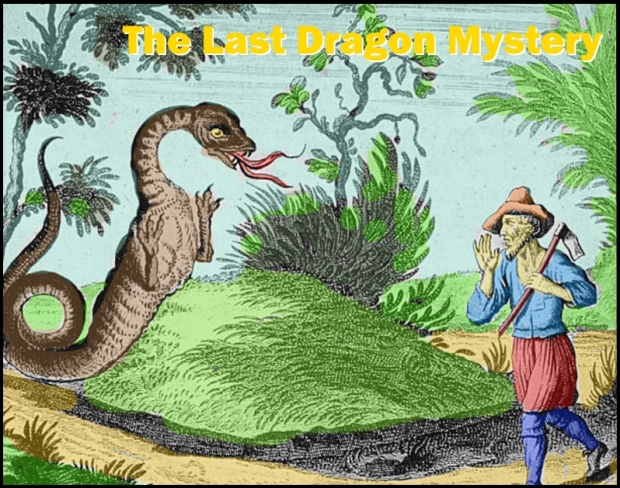

On May13th, 1572 an ox cart driver claimed to have killed a “small dragon” near the city of Bologna. It would be tempting to dismiss this story as nothing more than a piece of quaint folklore except that the body of the supposed dragon was examined by one of the leading naturalists of the day who made sketches and then preserved the body and displayed it in a museum for many years. Further research indicates that similar creatures have been reported in other parts of Europe before and since the Bologna encounter.
The descriptions suggest a completely unknown creature. But, just what could it have been? Was it really a dragon? Let’s take a look.

 Ulisse Aldrovandi (1522 – 1605) is generally recognised as the person who first formulated the concept of what we now call the study of natural history. Aldrovandi (his name is also given in contemporary documents as Aldrovandus and Aldroandi) was born to a wealthy family in Bologna in 1522. The University of Bologna opened around 1088 and received its first charter from Frederick I in 1158 making it the oldest university in the world. In 1553 Aldrovandi gained a degree from the university in Medicine and Philosophy and began teaching logic and philosophy there in 1554. By 1559 he was appointed Professor of Philosophy and in 1561 he became the first Professor of Natural Science anywhere in the world.
Ulisse Aldrovandi (1522 – 1605) is generally recognised as the person who first formulated the concept of what we now call the study of natural history. Aldrovandi (his name is also given in contemporary documents as Aldrovandus and Aldroandi) was born to a wealthy family in Bologna in 1522. The University of Bologna opened around 1088 and received its first charter from Frederick I in 1158 making it the oldest university in the world. In 1553 Aldrovandi gained a degree from the university in Medicine and Philosophy and began teaching logic and philosophy there in 1554. By 1559 he was appointed Professor of Philosophy and in 1561 he became the first Professor of Natural Science anywhere in the world.
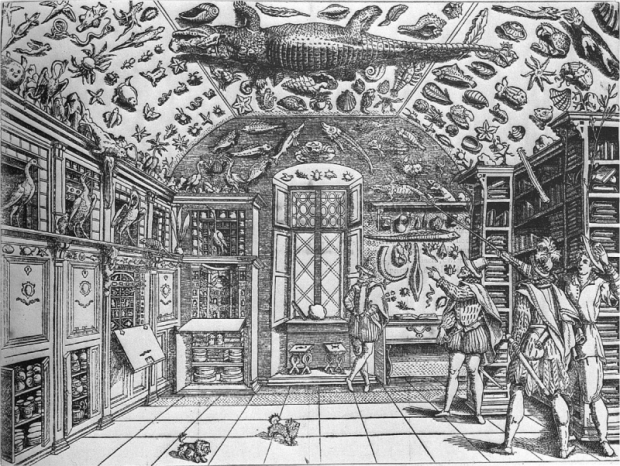 Aldrovandi’s Theatre of Natural Science
Aldrovandi’s Theatre of Natural Science
Aldrovandi was fascinated by both botany and zoology and collected a huge number of specimens which were displayed in the “Theatre of Natural Science” in his home in Bologna, an early attempt to create a natural history museum. He also oversaw the opening in 1568 of the Orto Botanico dell’Università di Bologna (Botanic Garden of the University of Bologna), one of the first public botanic gardens in the world. Much of what we now know of the life and work of Aldrovandi comes from the huge number of essays and many books he wrote which were published by the university. Many of these were attempts to describe and categorise plants, insects and animals for the first time. Only five of Aldrovandi’s books were published before his death in 1605. The remaining books were published by the university between 1605 and 1667.
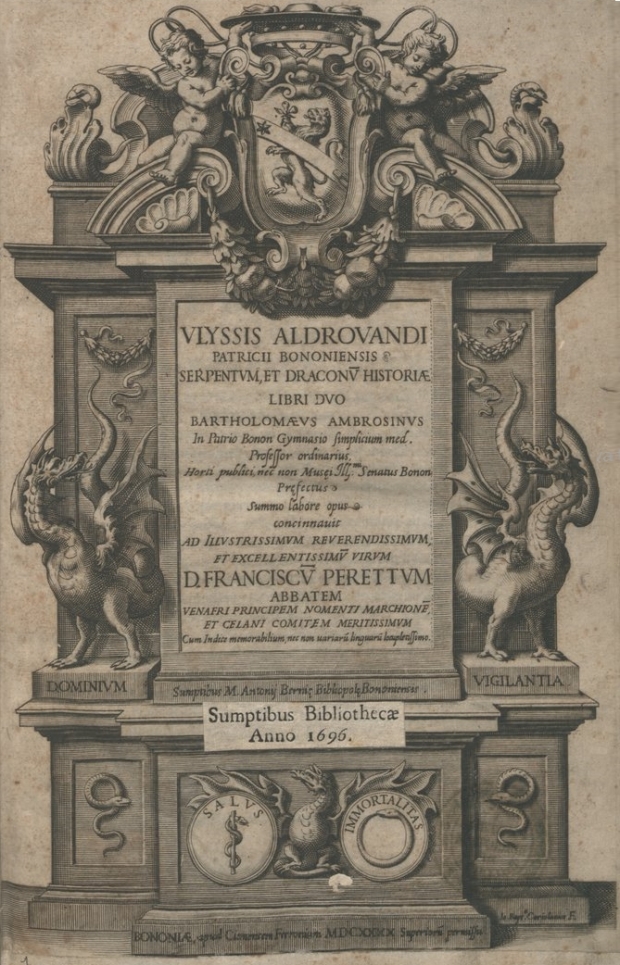 The frontispiece of Serpentum, et draconum historiae libri duo
The frontispiece of Serpentum, et draconum historiae libri duo
In 1640 the university published an illustrated reference to snakes and dragons by Aldrovandi (Serpentum, et draconum historiae libri duo – The Natural History of Snakes and Dragons). The idea of a naturalist writing about dragons may seem strange to us now, but back in the sixteenth and seventeenth centuries dragons were considered to be real creatures. It’s notable that in 1642 the university published Aldrovandi’s Monstrorum historia cum Paralipomenis historiae omnium animalium (Chronicle of Monsters) which described mythical creatures such as the Harpy and the Basilisk. It’s clear that Aldrovandi was very careful to make a distinction between mythical monsters and what were supposed to be real creatures.
Even in The Natural History of Snakes and Dragons, where Aldrovandi describes several types of dragons, he makes it clear that he has not personally seen or examined any of these creatures himself and that his information has come from the accounts of travelers and from earlier writers. All except for one dragon. Under the heading Draco Bononiensis (Bologna Dragon), Aldrovandi provides the following description of the killing of a small dragon the remains of which he was able to personally examine:
“The dragon was first seen on May 13, 1572, hissing like a snake. He had been hiding on the small estate of Master Petronius near Dosius in a place called Malonolta. At 5 PM, he was caught on a public highway by a herdsman named Baptista of Camaldulus, near the hedge of a private farm, a mile from the remote city outskirts of Bologna. Baptista was following his ox cart home when he noticed the oxen suddenly come to a stop. He kicked them and shouted at them, but they refused to move and went down on their knees rather than move forward. At this point, the herdsman noticed a hissing sound and was startled to see this strange little dragon ahead of him. Trembling he struck it on the head with his rod and killed it.”
Aldrovandi was given the body of the strange creature which he examined carefully. It was, he concluded, definitely a reptile and the first of this type that he had seen. The creature was around three feet long (leading Aldrovandi to wonder whether it was a young example), had just two legs and appeared to move by slithering like a snake and using its legs to propel it forward. It had a long, slender neck and tail and a thick body. Aldrovandi preserved the body of the creature and for some time it became one of the most celebrated exhibits in his Theatre of Natural Science.
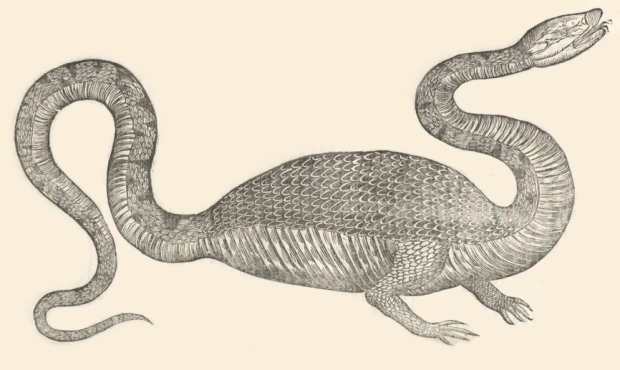 Draco bipes apteros captus in Agro Bononienfi (Two-legged dragon captured in a field near Bologna), illustration from The Natural History of Snakes and Dragons, p404.
Draco bipes apteros captus in Agro Bononienfi (Two-legged dragon captured in a field near Bologna), illustration from The Natural History of Snakes and Dragons, p404.
Aldrovandi classified this creature as a dragon simply because it didn’t seem to fit within any other known, existing group of animals. That’s why the events on 13th May 1572 have sometimes been referred to as “the last dragon slaying in Europe”. However, it’s notable that the creature described and illustrated in Aldrovandi’s book doesn’t have any of the attributes associated with the traditional, mythological European dragon (wings for example). I think that calling this creature a dragon was actually very unhelpful in that it caused later scholars to assume that this too was a mythological creature. But it’s clear from Aldrovandi’s book that this is something very separate from the other dragons described there in that this was a real creature which Aldrovandi himself was able to examine.
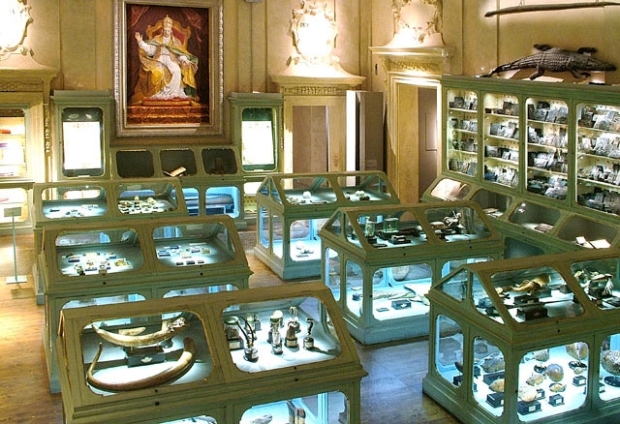 The Museo di Ulisse Aldrovandi, within the Museo di Palazzo Poggi in Bologna.
The Museo di Ulisse Aldrovandi, within the Museo di Palazzo Poggi in Bologna.
By the time of his death in 1605, Aldrovandi claimed that he had amassed a collection of more than 18,000 “different natural things”, including of course the remains of the Bologna Dragon. These items continued to be displayed in his home until 1617 at which time they were put on public display in the Palazzo Pubblico. The collection was moved to the Instituto delle scienze in the Palazzo Poggi in 1742, where some items remain on display to this day (the building is now the Museo di Palazzo Poggi in Bologna). However, during the nineteenth Century items from Aldrovandi’s collection were removed from the museum and many are now lost. The remains of the Bologna Dragon are not part of the current collection in the Palazzo Poggi and no-one seems to know when they were removed or what happened to them.

One theory is that Aldrovandi’s Bologna Dragon was a hoax. However, it seems very unlikely that an experienced naturalist like Aldrovandi could have been taken in by such a hoax and he certainly had plenty of time to examine the dead creature before he wrote about it. So, if it was a hoax, this can only have originated from Aldrovandi himself. That isn’t quite as unlikely as it seems – respected renaissance scholars and artists certainly weren’t averse to the odd practical joke. Sometimes these were perpetrated purely for amusement – Leonardo da Vinci for example, created a tiny ‘dragon‘ by attaching fake wings, horns and eyes to a live lizard which he then used to startle his friend Pope Leo X. Other hoaxes were undertaken to humiliate competitors and colleagues – a scholar would announce some wild new discovery and then happily shout “gotcha!” when this was accepted as genuine by others (some people believe that the mysterious Voynich manuscript is just such a renaissance joke).
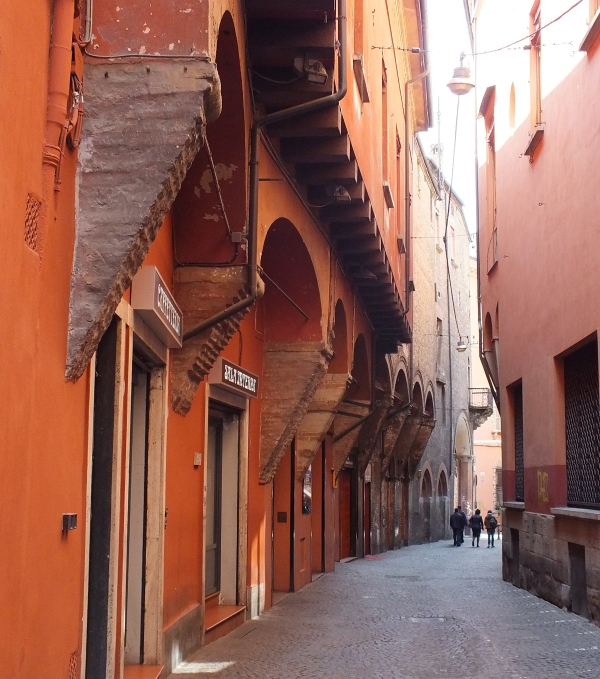 Many of the narrow streets and grand Palazzos of modern-day Bologna haven’t changed much from Aldrovandi’s time.
Many of the narrow streets and grand Palazzos of modern-day Bologna haven’t changed much from Aldrovandi’s time.
However, there is no evidence of Aldrovandi attempting anything of this sort. The creature was displayed in his museum for thirty years before his death – surely there would have been some hint if it was nothing but a joke? And really, Draco Bononiensis isn’t sufficiently outrageous to make sense as a practical joke. If it had wings, a triangular end-piece to its tail or any of the other traditional trappings of a dragon, or if for example it had been claimed to breathe fire, this might have made sense. But as described and illustrated in Aldrovandi’s book, the creature just isn’t sufficiently weird to make anyone look foolish for believing in it. The evidence suggests strongly that Aldrovandi was puzzled about what this creature was, but that he believed it to be a real animal.
It is also notable if you take the time to look at the descriptions and drawings of snakes which appear in the same book that they are accurate, instantly reconisable and not at all fanciful. Aldrovandi was a meticulous and methodical observer of the natural world and there is no reason to suppose that his presentation of Draco Bononiensis is anything but an objective and detailed attempt to describe a completely unknown animal. This must be one of the very few occasions in history when a Professor of Natural History has had the opportunity to examine the body of an unknown cryptid!
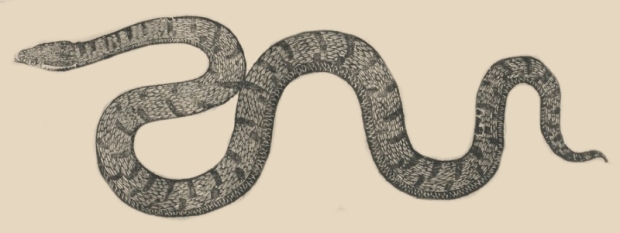 Male Viper, another drawing from The Natural History of Snakes and Dragons
Male Viper, another drawing from The Natural History of Snakes and Dragons
If it wasn’t a hoax, just what kind of animal was Draco Bononiensis? To help us consider this, we must to travel 200km north from Bologna, to the area of the Alps where Italy, Switzerland, Austria and Germany meet. In this area there are persistent stories about an odd creature variously known in local areas as (amongst other things) the tatzelwurm, springwurm, stollemvurm, lindwurm, praatzelwurm, bergstutzen and hockwurm. For the sake of simplicity I’ll refer to it here as the tatzelwurm (“worm with claws”) as this seems to be the most common name. I first came across mention of this creature in Bernard Heuvelmans’ 1958 book On the track of unknown animals.
In this book Heuvelmans mentions the two earliest written references he found to the tatzelwurm. The first was in a German hunting and nature guide, Neues Taschenbuch für Natur, Forst und Jagdfreunde auf das Jahr 1836 (New Pocket Guide for Nature, Forest and Hunting Enthusiasts for the year 1836). This guide contains a short description of the tatzelwurm (which is treated as a real and possibly dangerous creature which hunters and walkers may encounter) and an illustration which Heuvelmans notes shows a “curious picture of a sort of scaly cigar, with formidable teeth and wretched little stumps of feet”. In the Swiss almanac for walkers and climbers Alpenrosen published in 1841, there is also a drawing which shows a tatzelwurm as a long scaly creature with two tiny front legs. Heuvelmans considered that the tatzelwurm was most probably some unknown form of salamander or possibly a Gila Monster.
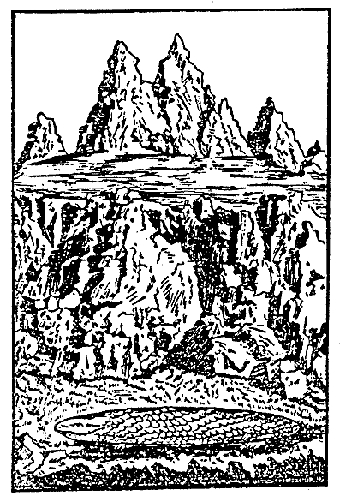 Der Tatzelwurm vom Dachstein. In der Gosau am Dachstein soll vor hundert Jahren dieser Tatzelwurm einen jungen Mann angegriffen und gebissen haben.(The Tatzelwurm of Dachstein. In Gosau one hundred years ago this creature attacked and bit a young man.) Illustration from Neues Taschenbuch für Natur, Forst und Jagdfreunde auf das Jahr 1836.
Der Tatzelwurm vom Dachstein. In der Gosau am Dachstein soll vor hundert Jahren dieser Tatzelwurm einen jungen Mann angegriffen und gebissen haben.(The Tatzelwurm of Dachstein. In Gosau one hundred years ago this creature attacked and bit a young man.) Illustration from Neues Taschenbuch für Natur, Forst und Jagdfreunde auf das Jahr 1836.
Newspapers in Austria, Switzerland, Southern Germany and Northern Italy have carried reports of tatzelwurm sightings (though they often use local names for this creature) from the seventeen hundreds up to the present day. Below are brief excerpts giving descriptions of the tatzelwurm from some of the claimed encounters:
1811, Switzerland. A teacher saw an animal he described as around five feet long with a head like a snake and two legs.
1845, Southern Germany. Two, twelve-year old boys saw a reddish coloured creature as long and thick as a man’s arm and with a flat head. When disturbed, the creature fled, spitting.
1883, Austria. A man in an alpine restaurant watched an odd creature resembling a lizard for twenty minutes. He described it as one and a half feet long with brown or green scaly skin and two forelegs but no hind legs.
1884, Austria. A 13 year old boy saw a reddish brown creature around two feet long with two font legs but no visible hind legs. The creature spat at the boy and he ran away.
1914, Northern Italy. A farmer observed an odd animal which was 30 inches long and five inches thick with a round head and just two front legs.
1927, Austria. Three foresters described seeing an unidentified creature which was 50-60 inches long with smooth skin and two front legs only. The creature was described as hissing and spitting like a cat.
2007, Austria. A twelve year old boy claimed to have seen a brown, 50cm long lizard on the banks of the Enns River near to the town of Ternberg.
2009, Italy. Over a period of several years a number of people in the Valtelina Valley near the Swiss border reported sightings of an agile, bipedal lizard approximately five or six feet in length.
There are many, many other sightings in addition to those which I have included here, but I hope these give a general flavor of what is being reported. It is notable that most tatzelwurm reports (though not all) seem to be referring to a two-legged reptile which sounds very similar to the dragon described by Aldrovandi. It’s notable that several of these sightings include reports of the creature spitting, as Aldrovandi also described.
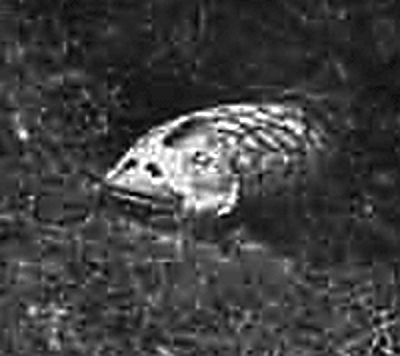 Alleged photograph of tatzelwurm taken in 1934 and published in April 1935 in the German magazine Berliner Illustrierte Zeitung. Now believed to be a fake.
Alleged photograph of tatzelwurm taken in 1934 and published in April 1935 in the German magazine Berliner Illustrierte Zeitung. Now believed to be a fake.
There have been several purported photographs of the tatzelwurm, beginning in 1934 when a photographer named Balkin claimed to have photographed a tatzelwurm near Meiringen, Switzerland. This was initially thought to be a genuine photograph (and led to at least one expedition to the area to capture the tatzelwurm), but it is now generally accepted that this photo was a faked image using a ceramic garden ornament! There have been subsequent photographs and even a claimed tatzelwurm skeleton, but none of these photographs or claimed physical evidence have stood up to detailed analysis.
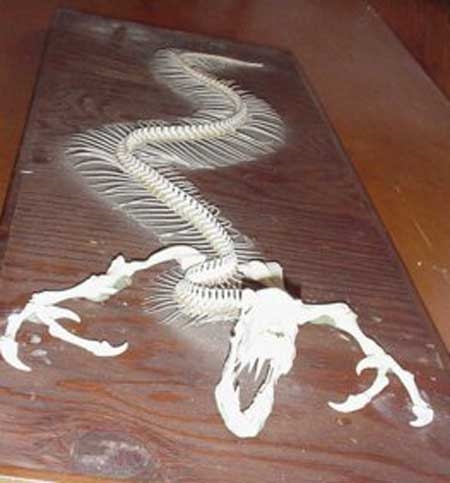 Claimed tatzelwurm skeleton, now thought to be a hoax.
Claimed tatzelwurm skeleton, now thought to be a hoax.
The earliest newspaper reports seemed to assume that the tatzelwurm was a real but unknown form of lizard. Later, as the creature came to be viewed as mythological, these became rather sly tongue-in-cheek reports which mocked those reporting the sightings. The most recent reports seek to find a rational explanation for sightings, the most common being that people are seeing an escaped pet lizard, perhaps some form of giant monitor lizard. However, witnesses to the recent Italian sightings are emphatic that what they have seen is much less massive and more snake-like than a monitor lizard and that it has just two legs which it can use to raise its head and neck into the air (one witness described the creature as looking like a scaly kangaroo).

The lack of physical or good photographic evidence makes it tempting to write-off the tatzelwurm as nothing more than a mythical creature. However, it’s more difficult to do this with Aldrovandi’s Bologna Dragon – Aldrovandi was an experienced observer and reporter of natural science and he was able to examine the body of the dead creature at leisure. If this wasn’t a hoax (and there seems no good evidence to think that it was) then he must have been describing a real and unknown animal. If we accept this and note the similarity of Draco Bononiensis to the consistent eyewitness descriptions of the tatzelwurm over an extended period, it does appear that we may be dealing with a rare but real creature here.
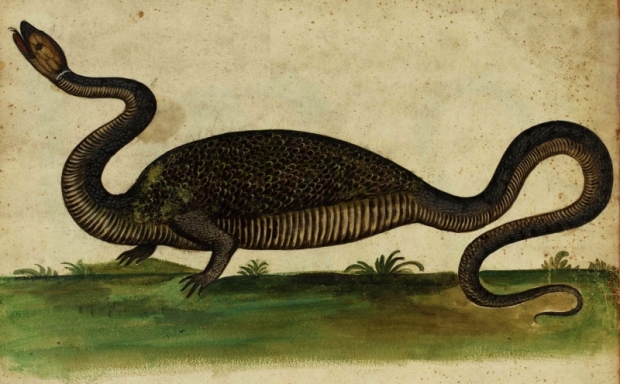 Seventeenth Century watercolour illustration of Draco Bononiensis
Seventeenth Century watercolour illustration of Draco Bononiensis
One of the most notable features of Draco Bononiensis (and many tatzelwurm sightings) is the presence of only two legs, placed at the front part of the body. This looks very odd and when I started researching this article I wasn’t aware of any other creature which has only two limbs positioned in this way, which was initially made me wonder if this was a hoax? However, I discovered that there are actually a number of lizards which have only two forelegs and a fair number of the vast range of different salamanders also have just two front legs, so this feature alone doesn’t rule out this creature as possibly being real.
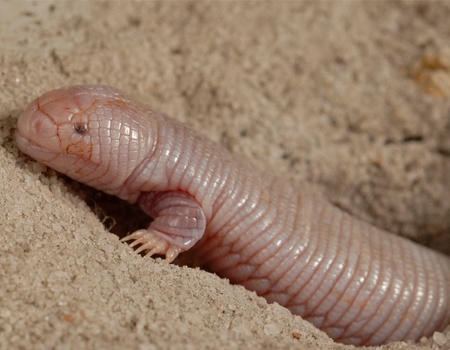 The Mexican Mole Lizard is just one of the several lizard species that has only a single pair of limbs.
The Mexican Mole Lizard is just one of the several lizard species that has only a single pair of limbs.
What about the hissing sound that Bologna Dragon and the tatzelwurm are both reported as making? Again, this is feasible. Many large lizards such as the Gila Monster and the Goanna (an Australian Monitor Lizard) use loud hissing as a threat display to warn off potential predators.
What about the fact that the Bologna Dragon seems to combine lizard and snake-like features, is that possible? It seems so. There are whole families of creatures which may look very much like snakes, but are actually legless lizards. Which makes me wonder if a slightly less legless lizard isn’t also possible?
 This may look like a snake, but it’s actually a legless lizard.
This may look like a snake, but it’s actually a legless lizard.
However, there is another possibility: atavism. This is the spontaneous development by an individual creature of a morphological feature possessed by ancestral forms which is not normally found in present-day examples. There are well documented examples of horses which have developed atavistic extra toes and cetaceans such as whales which have developed rudimentary external hind limbs. The creatures from which snakes evolved had four legs but these were gradually reduced to produce today’s snakes which have no limbs at all (though some large snakes such as Boas and Pythons do have vestigial hind limbs). There have been persistent reports and the occasional photograph of snakes which appear to have developed an atavistic single set of limbs, most recently from China where photographs emerged in 2009 of what appeared to be dead snakes, one with a single limb and the other with a pair of limbs. Atavism is unusual, but it certainly exists and the photograph below of what is claimed to be a small snake with limbs does seem to bear a striking resemblance to a smaller version of Draco Bononiensis.
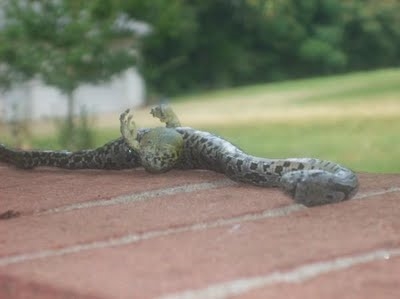 This picture is claimed to show a snake with an atavistic single set of limbs which was discovered recently in China.
This picture is claimed to show a snake with an atavistic single set of limbs which was discovered recently in China.
I believe that and the tatzelwurm and Draco Bononiensis may be the same creature (or at least, closely related) and are either an unknown form of lizard or salamander or snakes which have developed atavistic limbs. Unlike other cryptids like Bigfoot or the Loch Ness Monster, there is nothing here that makes me say “Whoa! Wait a minute, that can’t be right!” If Aldrovandi had chosen to classify the strange creature he examined in 1572 as a large lizard rather than a small dragon, and if he had included its description somewhere other than amongst a collection of clearly mythical creatures, I think it might have been taken much more seriously. If this was a real creature, then it is also possible that the very similar sounding tatzelwurm is also real though perhaps it’s now very rare or even extinct? The disappearance of the preserved remains of Draco Bononiensis from Aldrovandi’s collection is unfortunate, as is the lack of any physical evidence for the existence of the tatzelwurm. But then in the case of the tatzelwurm this might be explained if its habit of living in burrows under rocks (which has often been described) is accurate. If it also dies in these burrows, perhaps that’s why no-one has ever found the remains of one?
So, while it may not be a dragon precisely, I’m going to mark this one down as “possible”. I think that there may really have been (or may perhaps even still be) some large, unknown lizard-like creature which lived in the Alps and surrounding areas.

The Natural History of Snakes and Dragons, Ulisse Aldrovandi, 1640, has been scanned and is now available for free viewing online. On pages 402 – 404 you will find the description (in Latin) and illustration of Draco Bononiensis.
http://amshistorica.unibo.it/126
On the track of unknown animals, Bernard Heuvelmans, 1958.
https://www.amazon.co.uk/Track-Animals-Bernard-Heuvelmans/dp/0710304986
Return of the Clawed Serpent to its Alpine Haunts. Article on the tatzelwurm by Ulrich Magin which originally appeared in the Fortean Times.
http://www.highstrangeness.tv/0-23407-the-return-of-the-clawed-serpent-to-its-alpine-haunts.html
Museo di Palazzo Poggi website including a description of the Aldrovandi collection (in English):
http://www.museopalazzopoggi.unibo.it/60/dettaglio_collezione/theulissealdrovandimuseum.html
